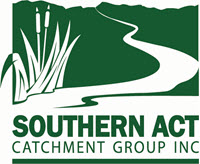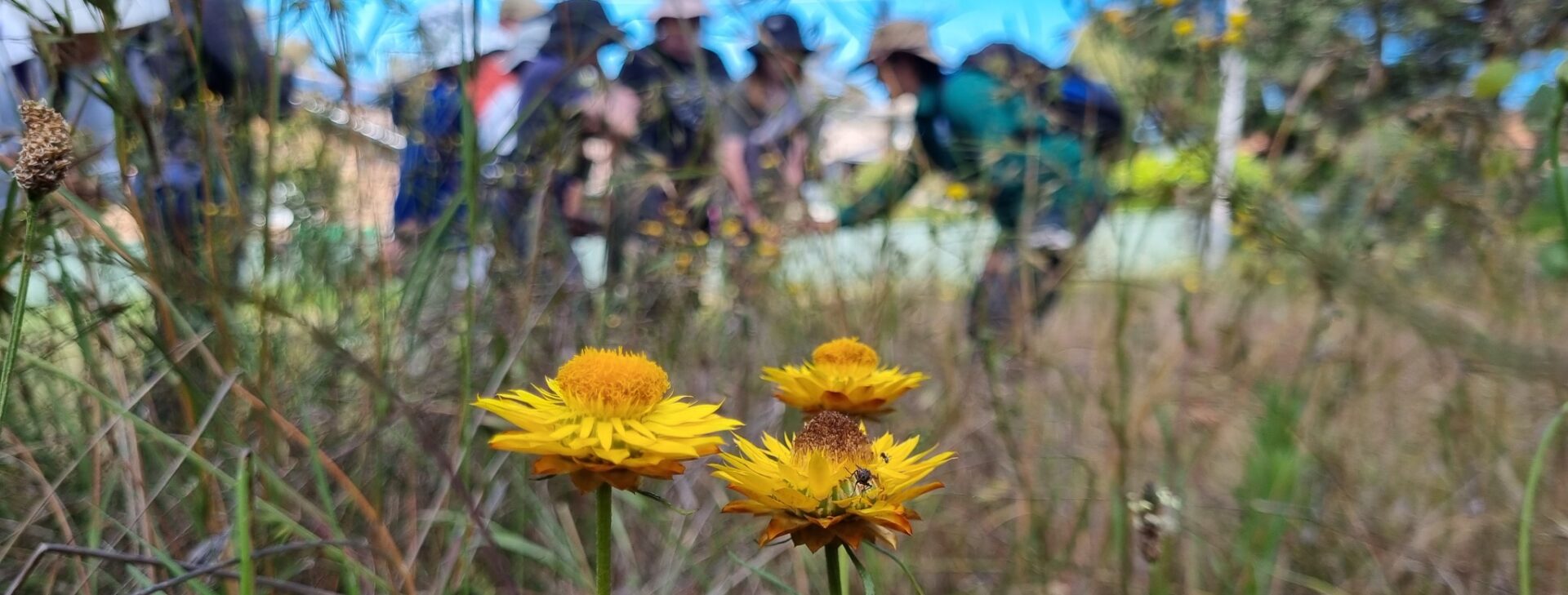How to get involved
To get involved contact communications@sactcg.org.au or call (02) 62885159
A history of the group
In the 1990s the ACT Government managed the Illoura paddocks. ACT Agriculture and Landcare (part of ACT Parks and Conservation Service then) developed a paddock plan for the paddocks which included:-
- fencing out the Illoura Creek and three ‘plantations’
- construction of a sediment trap dam in the bottom of the catchment to trap manure
- making eight paddocks out of three so they could implement cell grazing
- constructing water troughs in the centre of the paddocks to reduce pasture wear
- planting shelterbelts in paddock 1 and paddock 4 and along the creek line
- putting chicken wire around large trees to stop horses nibbling bark
- surveying the birds, flora and wildlife
- ripping, spraytopping and seeding four paddocks with phalaris and heavy duty pasture
- leaving paddocks one, five and six as a preserve for summer seeding native grasses
- developing well sheltered hospital paddocks for horse welfare.
ACT Ag and Landcare ripped and fenced. Scouts and several schools were involved in tree planting projects along the creek and in the fenced shelterbelts, and Baden Ranger developed a Scouts Landcare badge following this activity – so Illoura is famous for that.
By 1998 Illoura Paddocks was a Landcare Demonstration site. A Landcare nature walk trail was constructed through the paddocks to demonstrate Landcare principles including Frogwatch and Waterwatch and bird identification. The trail and excursion notes were regularly used by at least eight schools that I know of, politicians launched and opened things and visiting dignitaries from overseas were taken round the trail. People could see that horse agistment could be sustainable.
Much of the Landcare work stopped after the ACT government handed over management and the paddocks started to degrade.
By 2002-3 fires ripped through the paddocks , and a series of freak storms tore down at least half the larger eucalypts the groundwater changed as the trees were lost and some signs of dryland salinity appeared in the creekline paddock. Pattersons curse invaded the paddocks and Paddock 1 was virtually lost to grazing as it was overtaken by weeds.
In 2004 the Illoura Horse Owners Group held meetings with the paddock managers and ACT Government and started to do conservation work. In late 2004 the Illoura Horse Owners Group joined the Southern ACT Catchment Group SACTCG with the aim of progressing a paddock Landcare plan, getting insurance cover for work and getting advice about grant applications to restore trees lost in fires.
SACTCG representative Briony Woolaston met us and did a paddock walk, approved our proposal and helped us to obtain local native species through Greening Australia.
ACT Government and the paddock managers were involved in and approved of our work especially since we were working with the Molonglo Catchment Management Plan. ACT Governments role was to include conservation management of the trails to prevent a weed bank building up, management of the sediment trap dam and management and repair of water crossing places to allow horse and vehicle access to paddocks. Kevin Green was our ACT Government contact.
Illoura Horse Owners part was to plant non-native shade trees around the yards to replace the trees lost in the fires. They were to allowed to plant trees in-memory of lost horses. Natives could be planted elsewhere round the yards. Horse owners were to help weed and clear the holding yards and remove dangerous fallen wood.
Longer term included safely fencing out some big eucs (corner fencing), fencing to replace shelter trees and shrubs destroyed by fire and storms and working to manage and revegetate bare patches in groundwater discharge areas along the Illoura creek.
In 2005 Claire organised working bees that resulted in clearing the holding paddocks of weeds, rubbish removal, clearing burnt trees wood and snags that could stake horses, digging holes and planting trees and shrubs around the yards. We planted 20 local natives and at least ten non native shade trees around the yards. These ‘Christmas trees’ planted with red tinsel markers on 24 Dec 2005 and no one expected them to survive.
2006 the drought was so severe that there was no planting and we reduced work to hand watering plants and hand clearing weeds in holding and hospital paddocks. Membership of SACTCG lapsed because for some reason SACTCG never came back to us with the airphotos we needed to draw up plans, but also because here was no point in proceeding as it was too dry to plant anything.
2007 we can joyfully report that over half of our ‘christmas trees’ have survived drought, frost, ‘horse pruning’; and competition from phalaris. Scientists among us have established that horses can reach almost one and a half metres over (or under) a fence and that natives do very well on a diet of fresh horse manure and mouldy oaten hay. If these plants survived without tree guards or mulch we should be able to get a good strike rate from similar tubestock in new Illoura plantations.
I have just applied to rejoin SACTCG on behalf of the Illoura Horse Owners. We are still keen to work with CWC to develop a paddock planting plan.
2007 and onward We need your consent and support but these are our suggestions.
Given the looming prospect of EI – a huge priority for Illoura Horse Owners Group is to refurbish the hospital paddock – this means hand remove weeds, snags, rubbish and install several more drinking points (old baths are fine). Then ‘corner fence’ two corners to allow tall fast growing native trees and shrubs to grow as shelter that is out of reach of horses. Many of us think this work on the hospital paddock is urgent and should be completed in the next four weeks.
Send a message to the Illoura Horse Owners Group directly

